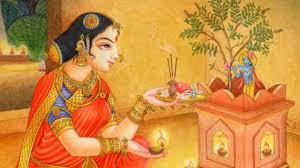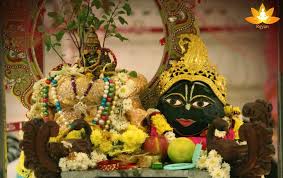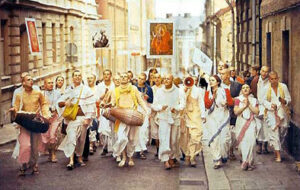 On October 28, 1972, in Vrindavan, Srila Prabhupada spoke on Srimad-Bhagavatam 1.2.17:
On October 28, 1972, in Vrindavan, Srila Prabhupada spoke on Srimad-Bhagavatam 1.2.17:
srnvatam sva-kathah krsnah
punya-sravana-kirtanah
hrdy antah-stho hy abhadrani
vidhunoti suhrt satam
“Sri Krsna, the Personality of Godhead, who is the Paramatma [Supersoul] in everyone’s heart and the benefactor of the truthful devotee, cleanses desire for material enjoyment from the heart of the devotee who has developed the urge to hear His messages, which are in themselves virtuous when properly heard and chanted.”
Here it is stated in Srimad-Bhagavatam: srnvatam sva-kathah krsnah. If we attentively hear about Krishna, punya-sravana-kirtanah, if we hear about Krishna, it doesn’t matter what I am, but simply by hearing about Krishna, I shall acquire some resultant action of pious activities. . . .
Srnvatam sva-kathah krsnah punya-sravana-kirtanah. Chaitanya Mahaprabhu accepted this process—simply hearing. That is the accepted process, sravanam, sravanam kirtanam. Chaitanya Mahaprabhu accepted this process when Ramananda Raya quoted a passage from Srimad-Bhagavatam spoken by Lord Brahma:
jnane prayasam udapasya namanta eva
jivanti san-mukharitam bhavadiya-vartam
sthane sthitah sruti-gatam tanu-van-manobhir
prayaso ’jita jito ’py asi tais tri-lokyam
[SB 10.14.3]
[“Those who, even while remaining situated in their established social positions, throw away the process of speculative knowledge and with their body, words and mind offer all respects to descriptions of Your personality and activities, dedicating their lives to these narrations, which are vibrated by You personally and by Your pure devotees, certainly conquer Your Lordship, although You are otherwise unconquerable by anyone within the three worlds.”]
So, Chaitanya Mahaprabhu accepted that people should be given chance, some way or other, to hear about Krishna. That’s all. These meetings are arranged, these sankirtana parties are arranged . . . We are sending our men throughout the whole world simply to give them some chance to hear about Krishna. This is the process. And it is actually happening very effectively.
When I was coming here, I was in Manila. In this Manila, Philippines, they eat dogs. But still they gave a very patient hearing to krsna-katha. My last meeting was in a big hotel. Our Sudama Vipra Gosvami Maharaja arranged it, and it was a very successful meeting, full of young men. They came to hear about Krishna. And they responded very nicely—they purchased books, they danced, they chanted.
So, this Krishna consciousness movement is progressing only on this basis: srnvatam sva-kathah krsnah. Just give them the chance to hear about Krishna. We are not bribing them; I have not bribed these American and European boys to become Krishna conscious. I have no money. When I went to America, I had only seven dollars—one hour’s expenditure in New York. You see? So there is no question of bribing them. But they heard about Krishna. I was speaking Bhagavad-gita on the street, in the store, in the park—and chanting. They heard, and they came to me. They became attracted. Why? Because it is said here, hrdy antaù-stho, within the heart, hy abhadrani. People are suffering because they have got so many dirty things within the heart. The most important dirty things are the modes of material nature: sattva-guna, rajo-guna, tamo-guna. Sattva-guna is not dirty, but it is mixed with dirty things. And rajo-guna and tamo-guna are purely dirty. . . .
This Krishna consciousness movement will save man. You can discover something to kill man, but you cannot discover something which will save man. That is Krishna consciousness. And it is very easy: simply by giving some time to hear about Krishna. As soon as one sincerely hears about Krishna . . . Krishna is situated in everyone’s heart. Isvarah sarva-bhutanam hrd-dese arjuna tisthati [Gita 18.61]. [“The Supreme Lord is situated in everyone’s heart, O Arjuna, and is directing the wanderings of all living entities, who are seated as on a machine, made of the material energy.”] Krishna and I are living together within the heart as friends. Krishna is such a sincere friend that He’s always trying to take us back again—back home, back to Godhead. That is His business. But I am denying, “No, Sir, I shall remain as hog. I shall be happy by eating stool.” Krishna says, “No, give up this business.” Sarva-dharman parityajya mam ekam saranam vraja [Gita 18.66]. [“Abandon all varieties of religion and just surrender unto Me. I shall deliver you from all sinful reaction. Do not fear.”] “I’ll give you protection.” “No, Sir, I’ll eat meat, I shall eat stool. I have got very good facility for sex life without any discrimination.” There are so many so-called . . . I do not wish to discuss, but sex life is so strong that they cannot give it up even in so-called devotional life.
So, this is a dirty thing. Actually, it is very dirty. But one can give it up if one is very strongly under the shelter of Krishna.
yad-avadhi mama cetah krsna-padaravinde
nava-nava-dhamany rantum asit
tad-avadhi bata nari-sangame smaryamane
bhavati mukha-vikarah sustu nisthivanam ca
This is Yamunacharya’s verse. Krishna is Madana-mohana. If one is attracted actually by Krishna, Madana cannot kill him; Krishna will save him. Actually, the dirty thing is this sex desire. Sex desire increases our attachment for this world.
ato grha-ksetra-sutapta-vittair
janasya moho ’yam aham mameti
pumsah striya mithuni-bhavam etam
janasya moho ’yam aham mameti
[SB 5.5.8]
Everything is there in Srimad-Bhagavatam—the ultimate knowledge to understand everything. Unfortunately, they speak on Srimad-Bhagavatam but not scrutinizingly, pointing out what are the defects in our life. They want to enjoy another type of sense gratification.
Anyway, we do not wish to discuss. But actually, if we want to get rid of all the dirty things from our heart, we must hear scrutinizingly about Krishna. This is the prescription given here. Srnvatam sva-kathah krsnah punya-sravana-kirtanah. If you do not understand, it doesn’t matter. You simply hear the vibration. Just like we are doing. What, in European countries and American countries, they’ll understand? But we are sending in every important street.
In New York we are sending in the Fifth Avenue, the most important street in the world. Fifth Avenue, New York—we are chanting. You have seen pictures in our Back to Godhead—they are chanting. In London, the most important street, Oxford Street, we send our men. In Melbourne, they’re . . . Now the police are arresting. I do not know what is the position now. But these boys and girls are prepared. They are so nice that they’re arrested sometimes. Just like Kazi was torturing Chaitanya Mahaprabhu’s party. Of course, now, civilized world, there is no such torturing, but our men are very often arrested and put into jail. But still they go. They go every day. Now in London the police have become disgusted. They do not arrest anymore. Yes. So, I say that if you are arrested, why you should be sorry? You go in the jail and chant Hare Krishna, so that others will get the opportunity to hear about Krishna.
So, this is our propaganda. Krishna consciousness movement means we are giving people the chance to hear about Krishna. Srnvatam sva-kathah krsnah punya-sravana-kirtanah.
The same thing can be done in India also. But we have got a better field of activities outside India, I tell you frankly. I am very much encouraged. Because we get very good response quickly. And they become immediately attached to Krishna, as you see the samples here. They have given up, on account of their attachment to Krishna, they have given up all their nonsense, or abhadrani. Abhadrani means illicit sex, intoxication, meat-eating, and gambling. These are the four pillars of abhadrani.
So, by Krishna consciousness, Krishna helps. Srnvatam. When Krishna sees that “This man, this living entity, is now sincere to hear about Me,” He helps. Hrdi. Because He’s there. You haven’t got to find out somewhere else. You haven’t got to go to Himalaya to find Him. He’s here. Hrdy antah-stho hi. He’s within. I am also within. And all my dirty things are also within. So as soon as He sees that “This living entity is now a little serious about hearing about Me,” He helps. Hrdy antah-stho hy abhadrani vidhunoti. He helps you. I cannot get rid of these dirty things by my own endeavor. That is not possible. But Krishna helps. As soon as we are little serious to hear about Krishna, He helps.
So,
srnvatam sva-kathah krsnah
punya-sravana-kirtanah
hrdy antah-stho hy abhadrani
vidhunoti suhrt satam
[“Sri Krsna, the Personality of Godhead, who is the Paramatma [Supersoul] in everyone’s heart and the benefactor of the truthful devotee, cleanses desire for material enjoyment from the heart of the devotee who has developed the urge to hear His messages, which are in themselves virtuous when properly heard and chanted.”] He is very intimate friend of the sadhus, of the devotees. He is everyone’s friend. Suhrdam sarva-bhutanam [Gita 5.29]. [“The sages, knowing Me as the ultimate purpose of all sacrifices and austerities, the Supreme Lord of all planets and demigods and the benefactor and well-wisher of all living entities, attain peace from the pangs of material miseries.”] He’s everyone’s friend. God, Krishna, is everyone’s friend, but He’s a special friend to the devotees. That is stated in the Bhagavad-gita. He says,
samo ’ham sarva-bhutesu
na me dvesyo ’sti na priyah
ye bhajanti tu mam bhaktya
mayi te tesu capy aham
[Gita 9.29]
[“I envy no one, nor am I partial to anyone. I am equal to all. But whoever renders service unto Me in devotion is a friend, is in Me, and I am also a friend to him.”] Because He’s God, He’s kind to everyone. Without His kindness, we cannot live for a moment. That is a fact. But if one becomes a devotee, He gives special protection. Kaunteya pratijanihi na me bhaktah pranasyati [Gita 9.31]. [“He quickly becomes righteous and attains lasting peace. O son of Kunti, declare it boldly that My devotee never perishes.”]
This human form of life is a special prerogative for the living entity, and if we take advantage of it and simply try to hear about Krishna, then our life is successful.
Thank you very much.
 By Taruni Radhe Devi Dasi
By Taruni Radhe Devi Dasi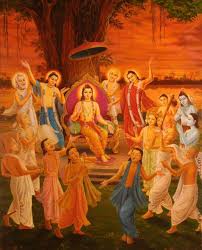

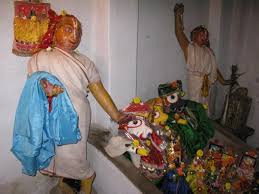





 Today is a red-letter day—I received an advance copy of my book about Srila Prabhupada and Juhu: I’ll Build You a Temple: The Juhu Story. The volume is beautiful, and I felt humbled by and grateful for all the help I received in this effort.
Today is a red-letter day—I received an advance copy of my book about Srila Prabhupada and Juhu: I’ll Build You a Temple: The Juhu Story. The volume is beautiful, and I felt humbled by and grateful for all the help I received in this effort.



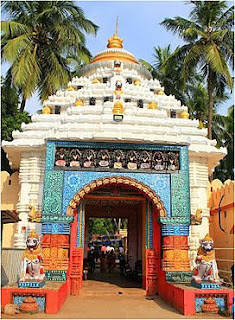



 Mathura Lilesvari Dasi: Below is a letter written by HG Vadanya Nitai Das, a disciple of HH Jayapataka Swami and son of HG Mahesh Advaita Das and HG Ananda Sundari DD. Vadanya Nitai passed away on Dec 3, 2016 in Malaysia. He was 27. His parents recently received this letter that he wrote to his aunt in 2010 when her mother passed away. They felt like he was speaking to them and asking them to be strong
Mathura Lilesvari Dasi: Below is a letter written by HG Vadanya Nitai Das, a disciple of HH Jayapataka Swami and son of HG Mahesh Advaita Das and HG Ananda Sundari DD. Vadanya Nitai passed away on Dec 3, 2016 in Malaysia. He was 27. His parents recently received this letter that he wrote to his aunt in 2010 when her mother passed away. They felt like he was speaking to them and asking them to be strong

 By the ISKCON GBC Strategic Planning Team
By the ISKCON GBC Strategic Planning Team



 By Indradyumna Swami
By Indradyumna Swami By Yogesvara dasa
By Yogesvara dasa
